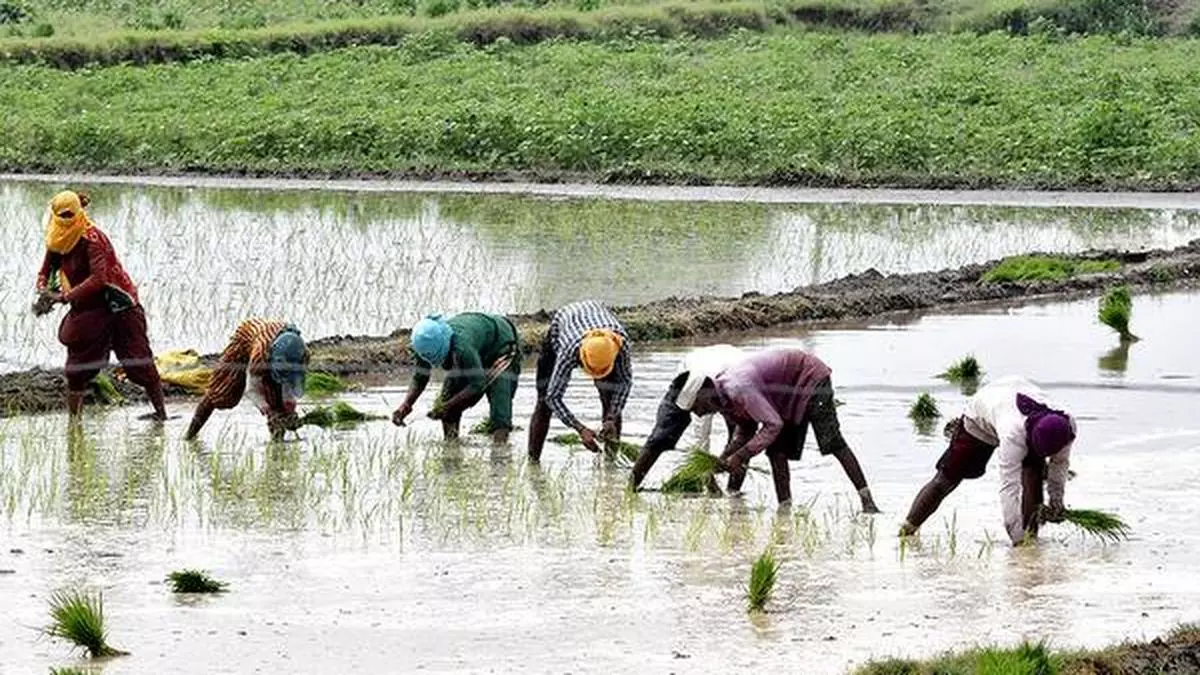Impact of extended monsoon and heavy rain on kharif crops
The monsoon is the backbone of Indian agriculture, sustaining 55 per cent of the country’s net sown area and supporting 34 out of 40 major crops. With 61 per cent of Indian farmers relying on rainfall for their livelihoods, a well-distributed monsoon is crucial for crop growth and the overall agricultural cycle. However, the India Meteorological Department’s forecast of an extended monsoon and above-normal rainfall in September, when key crops like rice, maize, sugarcane, and pulses are nearing ripeness, presents significant challenges.
Climate change and shift in monsoon patterns
Climate change is significantly altering monsoon patterns in India, leading to increased unpredictability and extreme rainfall. Warmer ocean temperatures and atmospheric shifts are raising moisture levels, resulting in heavier downpours and frequent flooding. Events like El Niño and La Niña further exacerbate this volatility – while El Niño weakens monsoons and causes droughts, La Niña brings excessive rains and floods. These fluctuating weather patterns, amplified by the broader impacts of climate change, are disrupting traditional agricultural practices, making it harder for farmers to rely on established methods. The need for improved water management and adaptive agricultural strategies is more urgent than ever.
Vulnerability of ripe summer crops
The harvest cycle is a delicate process, involving seeding, watering, and harvesting – all of which are deeply influenced by climatic factors such as rainfall, temperature, and humidity. Key summer crops like rice, wheat, maize, and pulses are particularly vulnerable to these climatic shifts. As climate patterns become more erratic, the risks associated with extended rainfall during the harvest season increase, threatening the success of these crucial crops.
Specific Impacts of extended monsoon and heavy rainfall
Extended heavy rains can cause severe waterlogging in fields, especially in low-lying areas, leading to root rot and fungal diseases that are particularly detrimental to crops like rice and maize. Waterlogging can reduce crop yields by up to 30 per cent, severely impacting productivity. Additionally, excessive moisture at harvest time deteriorates crop quality, with grains sprouting, sugarcane losing sucrose content, and pulses rotting, making them unsuitable for sale. Delayed harvests due to prolonged rainfall further exacerbate the problem, increasing labour costs and the risk of crop loss as overripe crops become difficult to store and sell.
Economic consequences for farmers and agricultural economy
The economic impact of extended monsoons is profound. Farmers, particularly smallholders, bear the brunt of crop losses, which can push them deeper into debt. According to the 2024 State of Marginal Farmers survey by the Development Intelligence Unit (DIU), over 50 per cent of marginal farmers reported losing at least half of their crops due to extreme weather events like unseasonal rains, prolonged winters, droughts, and floods. These losses lead to significant financial strain, higher post-harvest costs for drying and storage, and declining profits. The ripple effect includes reduced crop supply, rising food prices, and inflation, all of which place additional pressure on state governments to provide compensation, impacting their fiscal health.
Strategies for mitigating the impact
To build climate-resilient agricultural practices, it is essential to diversify crops, improve drainage systems, and adopt drought- and flood-resistant varieties. Effective water management, including investments in flood-resistant infrastructure and advanced irrigation techniques, can mitigate the impact of waterlogging. Developing and promoting crop varieties that are flood-resistant or have shorter growth cycles helps minimize losses from extended rains. Modern post-harvest technologies, such as advanced drying and storage facilities, are crucial in preventing crop quality deterioration due to excess moisture. Equally important is educating farmers on adapting to changing weather patterns through training programs and government initiatives, enabling them to implement effective strategies and manage the risks associated with unpredictable monsoons.
In conclusion, protecting agriculture from the growing challenges of unpredictable monsoons requires a collective effort involving government support, technological innovation, and farmer education. By prioritising sustainable water management and investing in climate-resilient agricultural practices, India can help its farmers withstand the uncertainties of a changing climate.
The author is strategic communications expert
